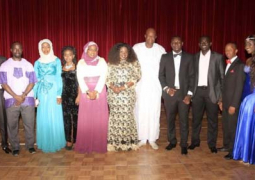The meeting will set important milestone for a brighter future of the Network as indicated in the attached invitation letter of the RAMPAO Secretariat in Dakar.
The meeting will validate the transitional solution proposed by the member states and the duration of the provisional affiliation of the network.
It will also look at the final option chosen by the states, as well as the empowerment and the type of organization the network would establish.
Other aspects of the meeting are to renew the governing bodies and the scientific council, as well as to approve candidates for full and associate membership.
The meeting will also identify potential partners to whom the biennial work plan for 2016-2017 can be submitted, as well as present and validate the roadmap of the empowerment process; discuss with parliamentarians on mechanism to be put in place for an effective involvement of parliamentarians, states, donors for the institutional and financial sustainability of the network; and present some small grants project awarded to members by the network.
The network was created within the framework of the regional strategy for marine protected areas (MPAs) developed in 2002 by different groups of stakeholders.
The network quickly gained support from the political authorities of the countries involved, who demonstrated their support by signing in 2003 a policy statement through their ministers of environment and fisheries in six 6 countries: cape Verde, The Gambia, Guinea Bissau, Guinea, Mauritania, and Senegal.
In 2010, RAMPAO was itself officially recognised by 15 ministers coming from the seven states allowing it to establish institutional credibility and promote its value as a contributor to the implementation of international commitment of states regarding the preservation of the coastal and marine zone.
The mission of RAMPAO is to link a set of representatives of MPAs, ecosystem and critical habitats that are necessary for the renewal of fisheries resources, the rehabilitation and restoration of critical habitats and conservation biodiversity.
It also aims to promote the exchange and mutual learning between members; create synergies between MPAs on topics of common interest; ensure that MPAs in the region function and operate effectively; and to strengthen capacity to do advocacy at the international level.
The RAMPAO currently comprises twenty-seven (27) MPA members located in five of the seven countries; 12 in Senegal, 4 Gambia, 5 Guinea Bissau, 3 in Guinea, and 3 in Mauritania.
These MPAs have different objectives and methods of management and governance. The RAMPAO network consists of national parks, natural reserves, marine protected areas, an indigenous community conservation area, wetlands, wildlife sanctuaries, and community-managed MPAs.
The MPAs currently cover approximately more than 2,722,595 hectares, with a coastal water protected rate of 12.7%, compared with the world averages of 7.20%.
There are in the geographic area of the network three Biosphere Reserves, one located at the border between Mauritania and Senegal, and about 1/3 of the eighteen existing coastal wetlands of international importance in the seven countries involved.


